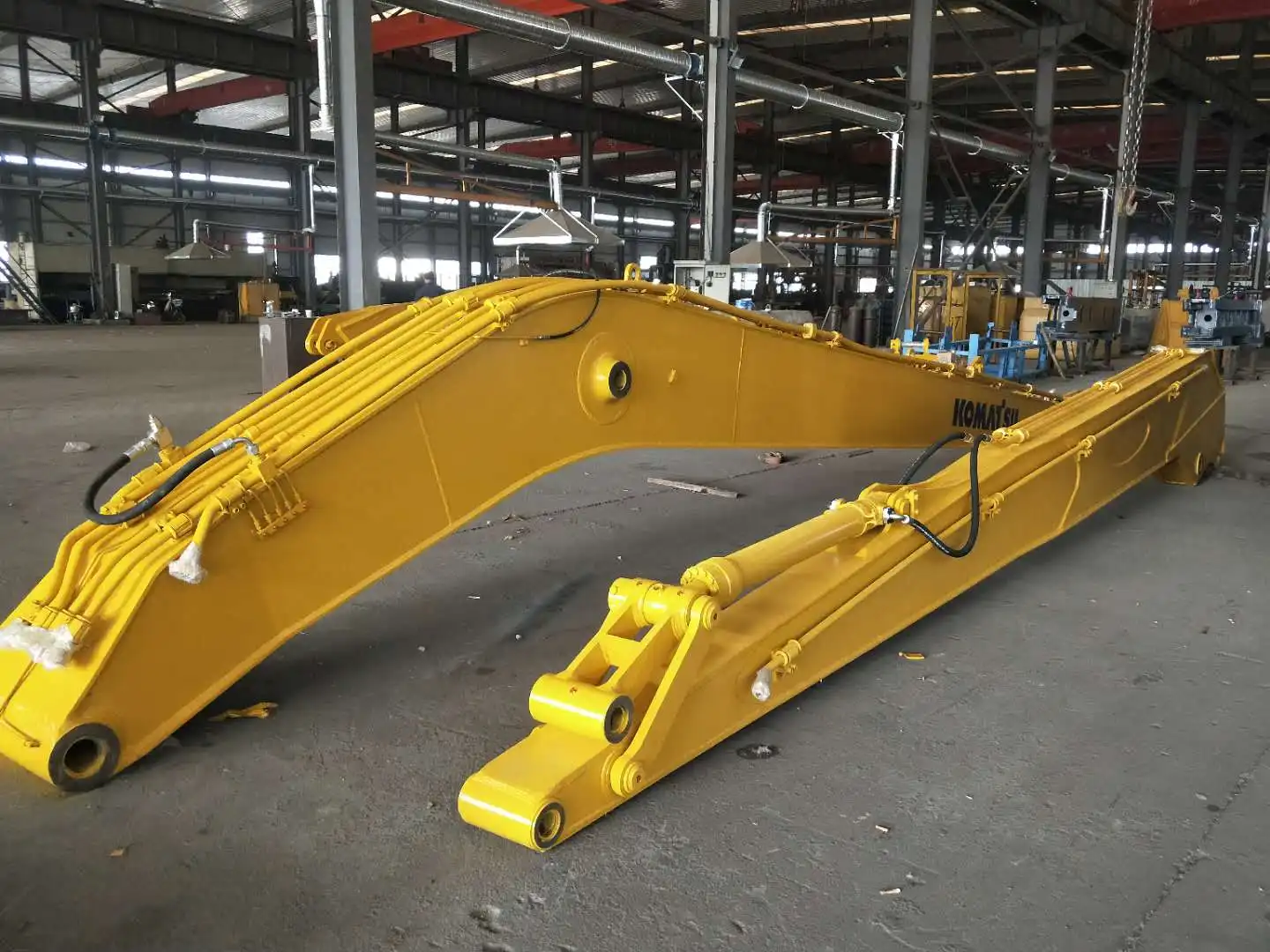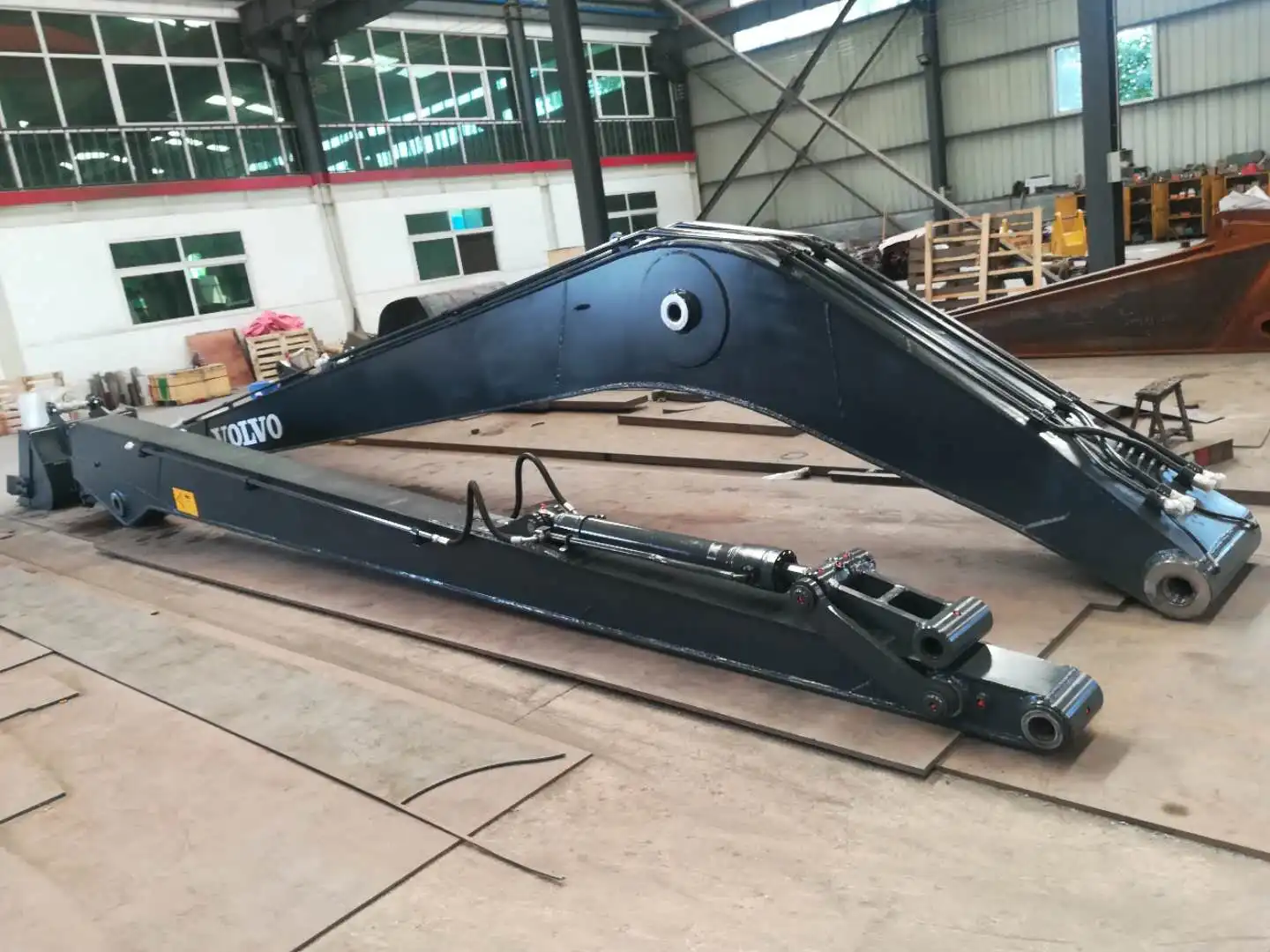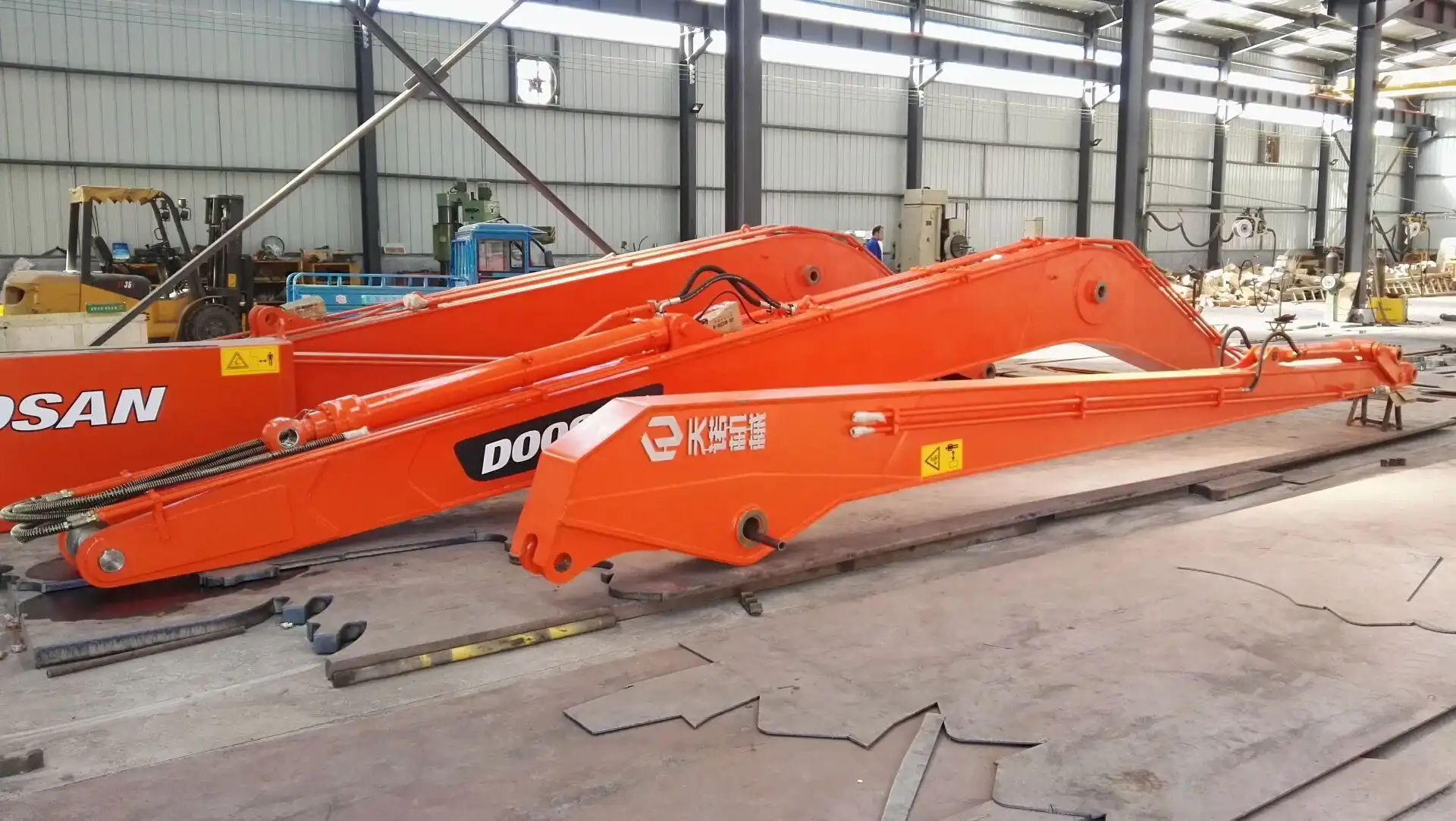What is the arm of an excavator called?
The arm of an excavator, a crucial component in heavy machinery, is commonly referred to as the "stick" or "dipper" in the construction industry. This essential part of the excavator long arm assembly connects the boom to the bucket, enabling precise digging, lifting, and material handling operations. Understanding the terminology and function of the arm is vital for professionals in construction, mining, and related fields to ensure efficient and safe equipment operation.
Excavator Arm Terminology: Industry Standards
Stick: The Main Component of Excavator Arms
In the world of heavy machinery, the term "stick" is widely used to describe the primary component of an excavator's arm. This long, sturdy piece extends from the boom and connects directly to the bucket or other attachments. The stick plays a crucial role in determining the excavator's reach and digging depth, making it a key factor in equipment selection for various projects.
Excavator sticks are designed to withstand immense forces during operation, utilizing high-strength steel and reinforced structures to ensure durability. The length and design of the stick can vary depending on the excavator's size and intended applications, allowing for customization to meet specific job requirements.
Dipper: An Alternative Name for Excavator Arms
While "stick" is the more common term, some professionals and manufacturers use "dipper" interchangeably to refer to the excavator arm. This alternative nomenclature harkens back to the early days of excavation equipment when steam shovels were the primary tools for earthmoving operations.
The term "dipper" emphasizes the arm's role in scooping or "dipping" into the earth, highlighting its function in the digging process. Despite the evolution of excavator technology, this historical term remains in use, particularly in certain regions or among long-standing industry veterans.
Boom-to-Bucket Connection: Understanding Arm Function
To fully grasp the role of the excavator arm, it's essential to understand its position within the boom-to-bucket connection. The arm serves as the vital link between the boom (the upper, angled portion of the excavator) and the bucket (or other attachments). This configuration allows for a wide range of motion and precise control over digging and lifting operations.
The arm's design incorporates multiple pivot points and hydraulic cylinders, enabling operators to manipulate the bucket's position with high accuracy. This intricate system of joints and hydraulics is what gives excavators their remarkable versatility across various construction and earthmoving tasks.

Evolution of Excavator Arm Naming Conventions
Historical Terms: From Steam Shovels to Modern Excavators
The terminology used for the excavator arm has evolved alongside the machinery itself. In the early days of mechanized excavation, steam shovels dominated the landscape. These machines featured a rigid arm often called a "dipper stick," which gave rise to the term "dipper" still used today.
As hydraulic systems replaced steam power, the design of excavator arms became more sophisticated. This technological leap led to the adoption of the term "stick," which better described the articulated nature of modern arms. The transition from steam to hydraulic power marked a significant milestone in excavator arm design, allowing for greater flexibility and precision in earthmoving operations.
Regional Variations in Excavator Arm Terminology
While "stick" and "dipper" are widely recognized terms, regional variations in excavator arm terminology exist across the globe. In some parts of Europe, for instance, the arm might be referred to as the "jib," drawing parallels with crane terminology. In Australia, you might hear it called the "dipper arm," combining both common terms.
These regional differences highlight the importance of clear communication in international construction projects. Understanding local terminology can prevent misunderstandings and ensure smooth collaboration between teams from different parts of the world.
Manufacturer-Specific Naming: Komatsu vs. Hitachi
Leading excavator manufacturers sometimes use their own terminology for excavator components, including the arm. For example, Komatsu often refers to the arm as the "stick" in their technical documentation and operator manuals. In contrast, Hitachi may use "arm" more frequently in their literature.
These manufacturer-specific preferences can influence industry terminology, especially in regions where a particular brand dominates the market. However, the interchangeability of terms like "stick," "arm," and "dipper" remains common practice among operators and technicians across brands.

Arm Components: From Stick to Bucket
Hydraulic Cylinders: Powering Excavator Arm Movement
At the heart of an excavator's arm functionality are the hydraulic cylinders. These powerful components use pressurized fluid to generate the force needed to move the arm through its full range of motion. Typically, an excavator arm features at least two main hydraulic cylinders: one controlling the arm's extension and retraction, and another managing the bucket's curl and dump actions.
The precision of these hydraulic systems allows operators to perform delicate tasks with remarkable accuracy, from grading surfaces to excavating around underground utilities. The size and capacity of these cylinders vary based on the excavator's size and intended applications, ensuring optimal performance across different job sites.
Pivot Points: Enabling Multi-Function Arm Assembly
Pivot points are critical components in the excavator arm assembly, allowing for the complex movements required in various digging and lifting operations. These joints connect the stick to the boom and the bucket, creating a flexible system that can adapt to different terrain and task requirements.
The design of these pivot points incorporates high-strength bearings and bushings to withstand the immense forces exerted during operation. Regular maintenance of these pivot points is essential to ensure smooth movement and prevent premature wear, ultimately extending the lifespan of the excavator arm.
Attachments: Expanding Excavator Arm Capabilities
While the bucket is the most common attachment for excavator arms, a wide range of specialized tools can be fitted to expand the machine's capabilities. These attachments include hydraulic hammers for breaking rock, grapples for handling debris, and augers for drilling holes.
The versatility provided by these attachments makes the excavator arm a truly multi-functional tool, capable of adapting to diverse project requirements. Quick-coupler systems have further enhanced this flexibility, allowing operators to switch between attachments rapidly, improving overall job site efficiency.

Understanding the terminology and function of arms is crucial for professionals in the construction, mining, and earthmoving industries. Whether referred to as a stick, dipper, or simply an arm, this vital component plays a central role in an excavator's versatility and efficiency. As technology continues to advance, the design and capabilities of excavator arms will likely evolve, offering even greater precision and productivity on job sites worldwide.
FAQ
1. How long is a typical excavator arm?
The length of an arm varies depending on the machine's size and intended use. Standard arm lengths range from 5 to 30 feet, with larger excavators featuring longer arms for increased reach and digging depth.
2. Can excavator arms be customized?
Yes, many manufacturers offer custom arm options to meet specific project requirements. This can include extended reach arms for deep excavation or specialized arms designed for particular industries like demolition or mining.
3. How often should excavator arms be inspected?
Regular inspections are crucial for maintaining arm performance and safety. Daily visual checks and more thorough weekly inspections are recommended, with comprehensive evaluations performed during scheduled maintenance intervals.
4. What materials are used in excavator arm construction?
Excavator arms are typically constructed using high-strength steel alloys designed to withstand the stresses of heavy-duty operations. Some manufacturers incorporate advanced materials like wear-resistant steel in high-stress areas to enhance durability.
5. How do different arm configurations affect excavator performance?
Arm configurations can significantly impact an excavator's reach, digging depth, and lifting capacity. Longer arms provide greater reach but may reduce lifting capacity, while shorter arms offer increased power and stability for heavy-duty tasks.
China Excavator Arm Manufacturers
TianNuo Machinery stands out as a leading excavator arm manufacturer in China, specializing in custom solutions for a wide range of applications. Our product line includes standard arms, extended reach booms, and specialized attachments designed to meet the diverse needs of the construction and mining industries. We offer various arm types, such as long reach excavator booms, unloading arms for steel grabbing machines, and tunnel arms for specialized excavation projects. For high-quality, competitively priced arms on excavatorsand expert guidance on selecting the right equipment for your needs, contact us at raymiao@stnd-machinery.com.
References
- Excavator Operator's Manual, Komatsu Ltd.
- Construction Equipment Terminology Guide, Caterpillar Inc.
- History of Excavation Technology, Journal of Construction Engineering
- Hydraulic Systems in Heavy Machinery, American Society of Mechanical Engineers
- Global Excavator Market Report 2023, Research and Markets
- Excavator Attachments and Their Applications, Construction Equipment Magazine
About Author: Arm
Arm is a leading expert in the field of specialized construction and railway maintenance equipment, working at Tiannuo Company. Tiannuo specializes in manufacturing a wide range of products, including railway maintenance equipment like railway sleeper changing machines and screening machines, excavator modification equipment such as excavator lifting cabs, various engineering arms for excavators, excavator accessories like digging buckets, and engineering vehicle auxiliary equipment like loader buckets.

